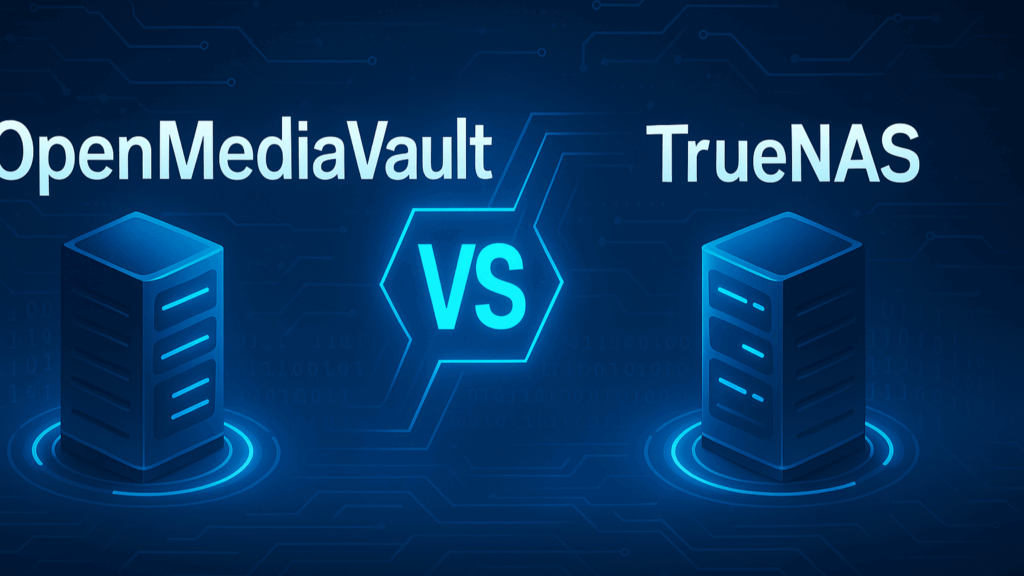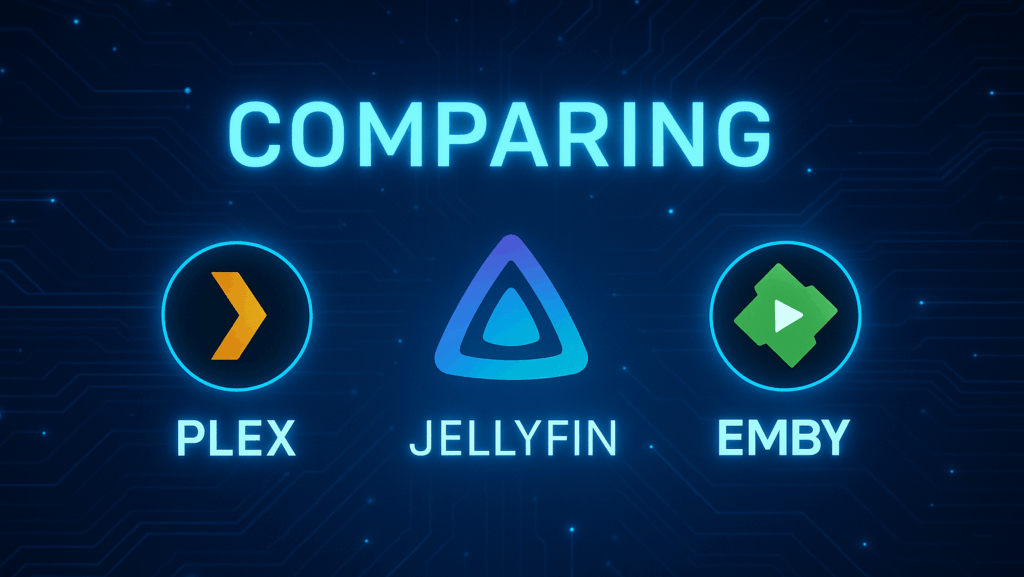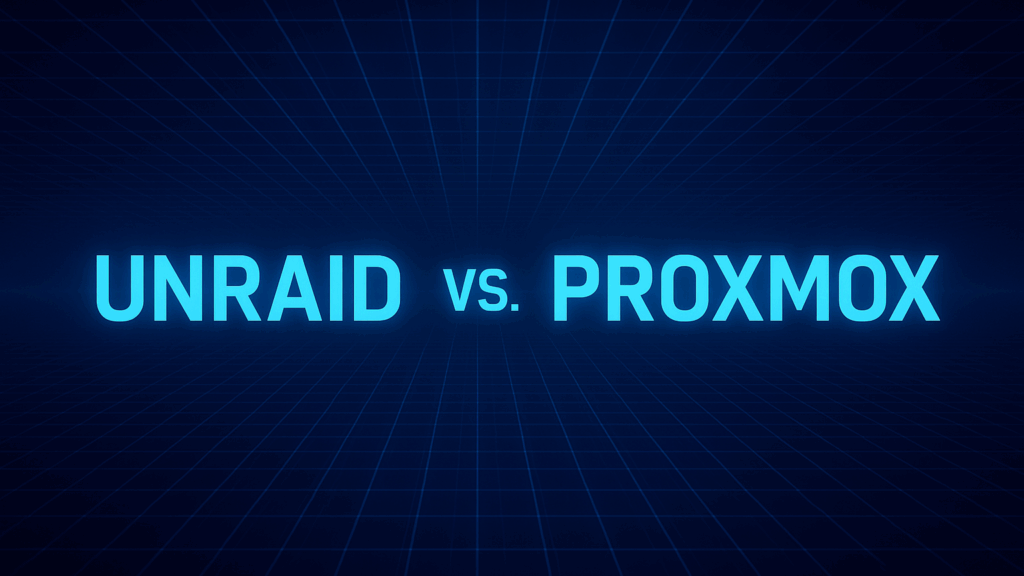If you’re building your own NAS and trying to decide between OpenMediaVault vs. TrueNAS, you’re in the right place. These two open-source operating systems offer powerful storage management capabilities, but they cater to different types of users and setups.
In this guide, we’ll compare features, performance, ease of use, and best use cases to help you pick the best OS for your DIY NAS.

Ideal for:
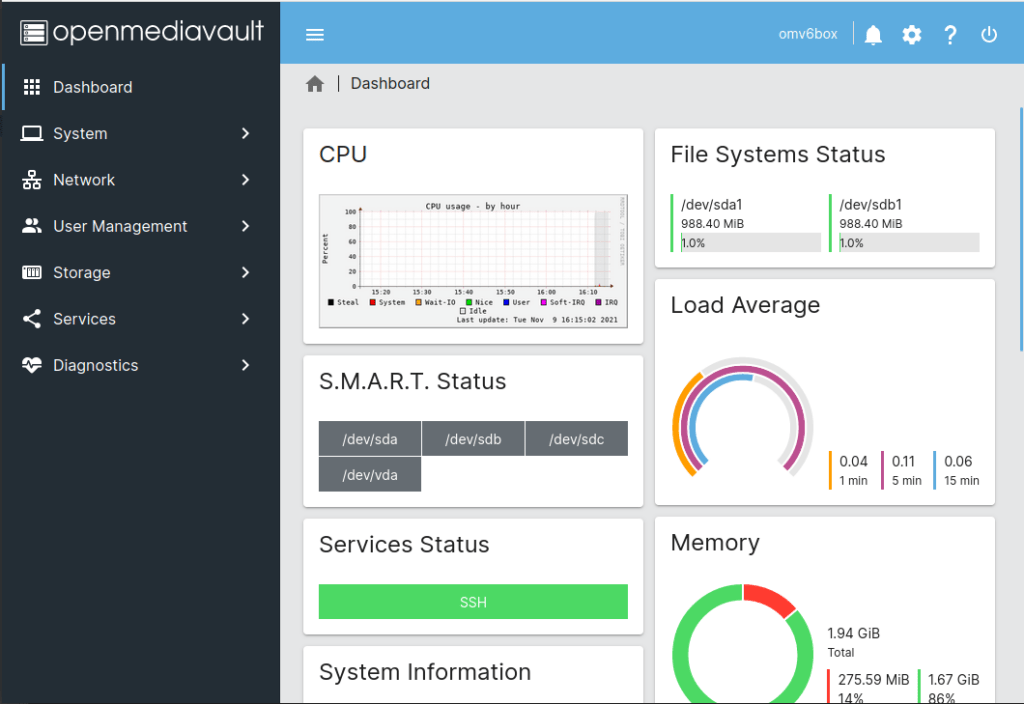

Ideal for:
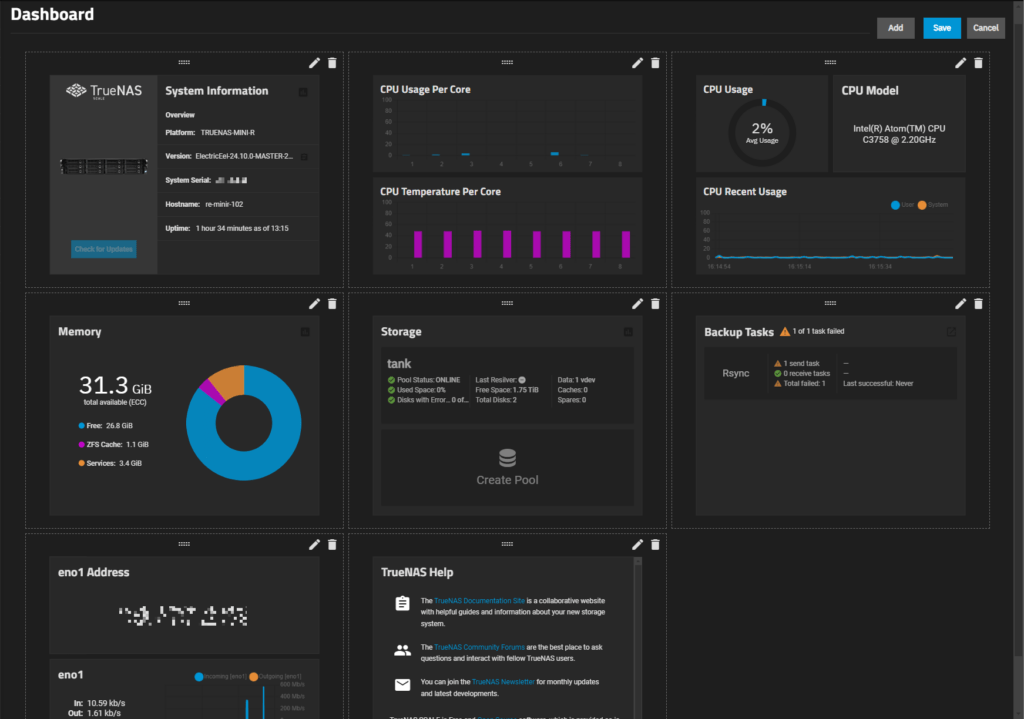
Head-to-Head Comparison: OMV vs. TrueNAS
| Feature | OpenMediaVault | TrueNAS (CORE/SCALE) |
|---|---|---|
| Ease of Use | ✅ Beginner-friendly UI | ⚠️ More complex (especially CORE) |
| Storage Backend | EXT4, XFS, Btrfs | ✅ ZFS with snapshots & replication |
| Docker Support | ✅ Via Portainer or plugin | ✅ Native in SCALE, not in CORE |
| Virtualization | ⚠️ Limited support | ✅ VMs (SCALE), bhyve (CORE) |
| Community | ✅ Active Debian community | ✅ Large BSD/Linux community |
| Performance | ✅ Lightweight and fast | ✅ High performance with ZFS |
| Ideal Use Case | Home NAS, backup server | Data-critical NAS, homelab, virtualization |
OpenMediaVault vs. TrueNAS – Which One Should You Choose?
Choose OpenMediaVault if you
- Are new to NAS or Linux
- Want an easy-to-manage system for backups, media, or file sharing
- Prefer a Debian-based OS and lightweight performance
💡 Great for Raspberry Pi, mini-PCs, and lower-end hardware.
Choose TrueNAS if you
- Need enterprise features and ZFS capabilities
- Have experience with FreeBSD or Linux (SCALE)
- Plan to use virtualization or advanced data protection
🔧 Ideal for multi-disk arrays, homelabs, or business environments.
Conclusion: Two Solid Choices for Different Needs
OpenMediaVault is perfect for beginners and lightweight NAS builds, while TrueNAS shines in data integrity, ZFS features, and virtualization.
- OMV = Simplicity and flexibility
- TrueNAS = Power and data protection
Choose the one that aligns with your hardware, experience level, and goals.
Get Started With the Right Hardware
👉 Visit our NAS Hardware Guides for top CPU, motherboard, and storage picks tailored for OMV and TrueNAS builds.
